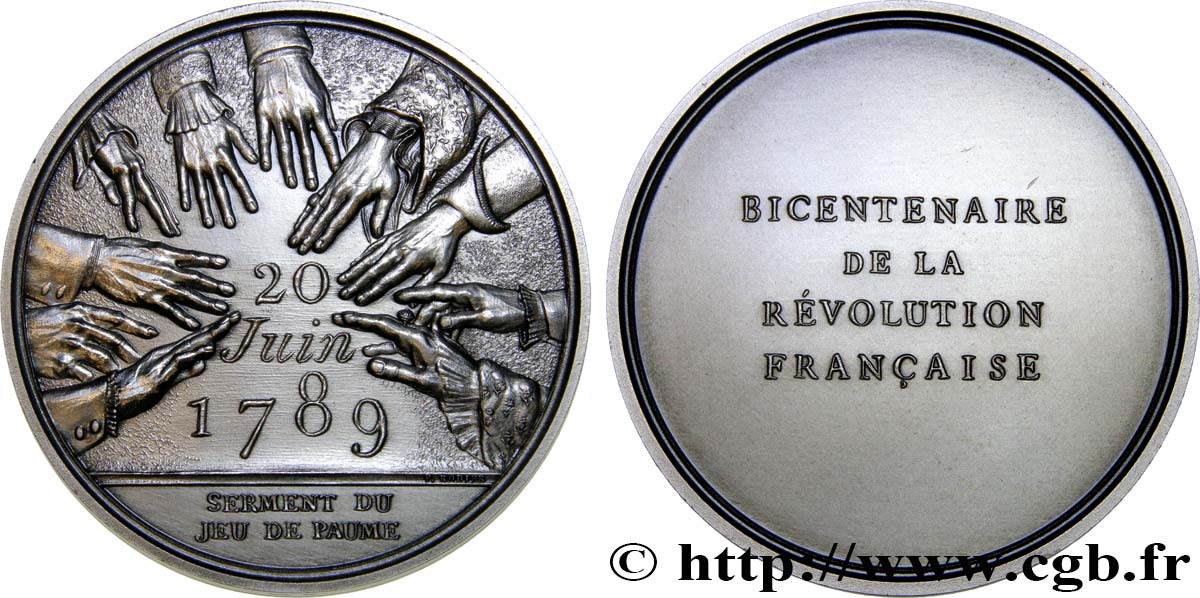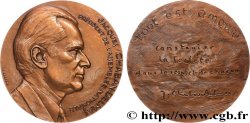E-auction 249-172498 - fme_441578 - QUINTA REPUBLICA FRANCESA Médaille pour le bicentenaire de la Révolution
Usted debe firmar y ser un comprador aprobado para pujar, Inicia sesión para pujar. Las cuentas están sujetas a la aprobación y el proceso de aprobación se alcanzan dentro de las 48 horas. No espere hasta el día en una venta se cierra el registro.Al hacer una oferta en este artículo usted está firmando un contrato jurídicamente vinculante para comprar este artículo y haga clic en «oferta» constituye una aceptación de los términos de uso de e-auctions de cgb.fr.
La subasta debe ser colocado en euros enteros cantidades venta only.The se cerrará en el momento en la descripción del artículo, no se ejecutarán las ofertas recibidas en el sitio después de la hora de cierre. Veces Transmition pueden variar y las ofertas pueden ser rechazadas si espera a los últimos segundos. Para más información envie el FAQ.
SIN GASTOS PARA LOS COMPRADORES.
SIN GASTOS PARA LOS COMPRADORES.
| Valoración : | 30 € |
| Precio : | 10 € |
| Oferta más alta : | 13 € |
| Fecha de fin de la venta : | 22 enero 2018 19:07:00 |
| participantes : | 5 participantes |
Tipo : Médaille pour le bicentenaire de la Révolution
Fecha: 1989
Nombre del taller / ciudad: 75 - Paris
Metal: bronce plateado
Diámetro: 77 mm
Eje de acuñación: 12 h.
Acuñador RODIER Pierre (1939-)
Peso: 237 g.
Canto: lisse + corne BR 1988
Comentarios sobre el estado de conservación:
Imposante médaille en état neuf avec une agréable patine grise d’origine
Anverso
Titulatura del anverso: 20 / JUIN / 1789 // SERMENT DU / JEU DE PAUME.
Descripción del anverso: Ensemble de mains tendues les unes vers les autres. Signé : P. RODIER.
Reverso
Titulatura del reverso: BICENTENAIRE / DE LA / RÉVOLUTION / FRANÇAISE.
Descripción del reverso: Légende en 4 lignes horizontales.
Comentario
Le serment du Jeu de paume est un engagement d’union pris le 20 juin 1789 à la salle du Jeu de paume, à Versailles, par les 578 députés du tiers état, du clergé et de la noblesse lors des États généraux de 1789. En réalité, seuls 300 députés sont présents. Face aux pressions du roi de France Louis XVI, ils firent serment de ne pas se séparer avant l’élaboration d’une Constitution. Cet engagement, dénué d'existence juridique dans le cadre de l'Ancien Régime prévalant encore, a un impact symbolique et politique très fort, qui en fait un moment important des préludes de la Révolution française. Préfigurant la souveraineté nationale et la séparation des pouvoirs, il amènera la réunion des trois ordres (noblesse, clergé, tiers état) en une « Assemblée nationale constituante », dont sera issue l'abolition de la féodalité (4 août 1789), la déclaration des droits de l'homme et du citoyen (26 août 1789), et les grands principes de la Constitution (fin 1791)..
The Tennis Court Oath is a pledge of unity taken on June 20, 1789, in the Tennis Court Hall at Versailles by the 578 deputies of the Third Estate, the clergy, and the nobility during the Estates General of 1789. In reality, only 300 deputies were present. Faced with pressure from King Louis XVI of France, they swore not to separate until a Constitution was drafted. This pledge, devoid of legal existence under the still-prevailing Ancien Régime, had a very strong symbolic and political impact, making it an important moment in the preludes to the French Revolution. Foreshadowing national sovereignty and the separation of powers, it will bring about the reunion of the three orders (nobility, clergy, third estate) in a \\\"National Constituent Assembly\\\", from which will come the abolition of feudalism (August 4, 1789), the declaration of the rights of man and of the citizen (August 26, 1789), and the great principles of the Constitution (end of 1791).
The Tennis Court Oath is a pledge of unity taken on June 20, 1789, in the Tennis Court Hall at Versailles by the 578 deputies of the Third Estate, the clergy, and the nobility during the Estates General of 1789. In reality, only 300 deputies were present. Faced with pressure from King Louis XVI of France, they swore not to separate until a Constitution was drafted. This pledge, devoid of legal existence under the still-prevailing Ancien Régime, had a very strong symbolic and political impact, making it an important moment in the preludes to the French Revolution. Foreshadowing national sovereignty and the separation of powers, it will bring about the reunion of the three orders (nobility, clergy, third estate) in a \\\"National Constituent Assembly\\\", from which will come the abolition of feudalism (August 4, 1789), the declaration of the rights of man and of the citizen (August 26, 1789), and the great principles of the Constitution (end of 1791).








 Informar de un error
Informar de un error Imprimir la página
Imprimir la página Comparte mi selección
Comparte mi selección Haz una pregunta
Haz una pregunta Consignar / vender
Consignar / vender
 Descriptivo
Descriptivo











